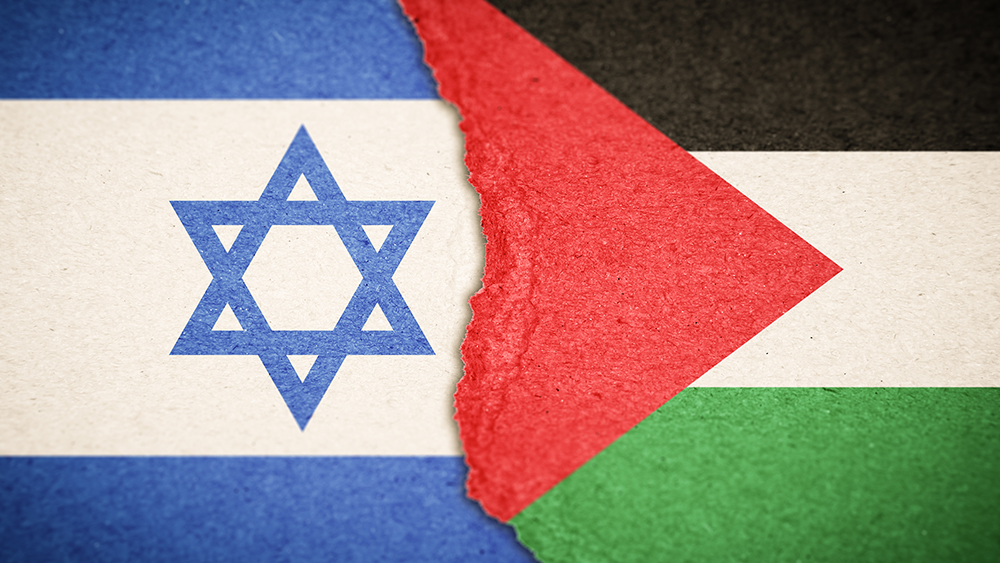Russia sends another shipment of FREE WHEAT to help address food insecurity in Mali, Africa
01/23/2024 / By Zoey Sky

Russian Ministry of Foreign Affairs spokeswoman Maria Zakharova announced on Jan. 17 that Mali has received 25,000 tons of humanitarian grain from Moscow.
Zakharova added that Russia would continue to help several African nations address socioeconomic hardships.
The shipment of grain was delivered through the port of Conakry in neighboring Guinea on Jan. 6 and handed over to the authorities of the landlocked West African country three days later, said Zakharova.
Zakharova added that the recent grain shipment was the fourth delivery of “much-needed Russian goods to the population on a free basis.” Overall, 50,000 metric tons of wheat and more than 22,000 metric tons of fertilizers had been transported to Mali through the Russian Ministry of Emergencies, with the first three shipments being received on June 7, June 18 and Dec. 6, 2023, according to Zakharova.
The deliveries are in fulfillment of Moscow’s pledge to provide food assistance to African nations facing food insecurity. The pledge is part of an agreement announced last summer by President Vladimir Putin at the Russia-Africa summit in St. Petersburg.
In 2023, Russian Agriculture Minister Dmitry Patrushev said up to 200,000 tons of free wheat would be supplied to six African countries: Burkina Faso, the Central African Republic (CAR), Eritrea, Mali, Somalia and Zimbabwe. (Related: Globalists weaponize food and energy supply to pave the way for global “Holodomor.”)
Earlier in January, Igor Mozgo, Russia’s ambassador to Eritrea, unloaded 25,000 tons of food aid at the East African nation’s port of Massawa. Somalia received the same amount of wheat from Moscow last November.
Burkina Faso, where Moscow recently reopened an embassy, is also scheduled to receive a share of the humanitarian grains.
Alexey Saltykov, Moscow’s ambassador to the former French colony, told officials in Ouagadougou last December that supplies would arrive in “the coming days”
According to reports, a shipment bound for CAR has arrived in neighboring Cameroon and been milled into wheat flour before transfer to the former French colony.
Additionally, Zimbabwe is slated to receive a 25,000-ton grain cargo that arrived in Mozambique’s port of Beira later in January.
Millions of people will go hungry in Africa due to war and high food prices, warns UN
In December 2023, the United Nations (UN) reported that a record 49.5 million people are expected to go hungry in West and Central Africa alone because of a combination of conflict, so-called climate change and high food prices. The figure is four percent higher than in 2023.
According to a new regional food security analysis released by the UN World Food Program (WFP) and other humanitarian agencies, in coastal countries, the number of people facing acute hunger is predicted to reach 6.2 million in 2024, up 16 percent from 2023.
Margot Vandervelden, the WFP’s acting regional director for Western Africa, explained that acute hunger remains at record levels in the region. However, funding needed to address the issue “is not keeping pace.”
Vandervelden added that insufficient funding means those who are moderately hungry will be forced to skip meals and eat less nutritious food. This unfortunately puts them at risk of “falling back into crisis or emergency phases, perpetuating the cycle of hunger and malnutrition.”
The analysis also revealed that more than two out of three households in West and Central Africa cannot afford healthy diets. According to the analysis, the cost of a daily nutritious diet in the central Sahel countries Burkina Faso, Mali and Niger is 110 percent higher than the daily minimum wage in the region.
According to UN figures, Sahel countries are dealing with an Islamist insurgency that has displaced at least four million people from their homes and farms. The Democratic Republic of Congo also has several ongoing conflicts that have displaced nearly seven million people.
The Sahel crisis has forced people to seek refuge in neighboring coastal countries such as the Ivory Coast, Ghana and Togo, which is struggling with its worst economic crisis in a generation.
Ollo Sib, a senior research adviser for the WFP, said almost 80 percent of people who are currently in a difficult food situation are in areas affected by conflict. Sib also advised that without intervention, the situation could worsen in certain areas as more than 2.6 million people were at risk of falling into famine.
Visit Famine.news for more stories about hunger and food scarcity.
Watch this episode of “Another Renz Rant” as host attorney Thomas Renz discusses the fight against a World Economic Forum-led push to create an artificial famine.
This video is from the Thomas Renz channel on Brighteon.com.
More related stories:
Survival tips: How to keep food on the table during a GLOBAL FAMINE.
Israel and South Africa face off at the International Court of Justice over Gaza genocide case.
Sources include:
Submit a correction >>
Tagged Under:
Africa, big government, chaos, Collapse, crisis, death by hunger, economic riot, famine, food collapse, food insecurity, food scarcity, food supply, humanitarian, hunger, Mali, Moscow, panic, rationing, Russia, shortages, South Africa, starvation, wheat
This article may contain statements that reflect the opinion of the author
RECENT NEWS & ARTICLES
COPYRIGHT © 2017 BIG GOVERNMENT NEWS





















